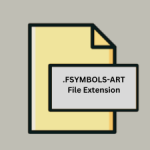.OIR File Extension

FV3000 Specimen Image
| Developer | Olympus |
| Popularity | |
| Category | Raster Image Files |
| Format | .OIR |
| Cross Platform | Update Soon |
What is an OIR file?
.OIR file extension is associated with the Olympus FV3000 confocal laser scanning microscope system.
Specifically, it denotes a file format used for storing specimen images captured using this advanced imaging technology.
These files contain crucial data about the scanned specimens, including detailed imaging parameters and metadata essential for scientific analysis.
More Information.
The development of the .OIR file format aligns with the evolution of confocal microscopy technology, where the demand for high-fidelity image storage and analysis capabilities grew rapidly.
Initially introduced alongside the FV3000 series, the .OIR format aimed to provide a standardized way to store complex image data while ensuring compatibility with Olympus’ proprietary software tools for image analysis and manipulation.
Origin Of This File.
The .OIR file format was developed by Olympus Corporation, a renowned manufacturer of optical and digital precision technology products, including microscopes and imaging systems.
It was designed specifically to handle the high-resolution images produced by their FV3000 series of confocal microscopes.
These microscopes are widely used in various scientific disciplines, such as biology, medicine, and materials science, where detailed imaging of biological specimens or materials at cellular or sub-cellular levels is crucial.
File Structure Technical Specification.
.OIR files are structured to accommodate the extensive metadata generated during image acquisition with the FV3000 microscope. They typically include:
- Image Data: High-resolution images of specimens captured in various imaging modes (e.g., fluorescence, phase contrast).
- Metadata: Detailed information about imaging parameters, such as laser intensity, exposure time, and microscope settings.
- Annotations: Optional annotations added during or after image acquisition to highlight specific features or regions of interest.
Technical specifications of .OIR files often include:
- Format Type: Binary file format optimized for high-resolution image data.
- Compatibility: Designed for use with Olympus’ proprietary imaging software suites.
- Compression: Some .OIR files may incorporate lossless compression techniques to minimize storage requirements without sacrificing image quality.
- Header Information: Contains critical metadata essential for correct interpretation and display of the image data.
How to Convert the File?
Converting .OIR files to other formats may be necessary for compatibility with different software tools or for publishing purposes.
While direct conversion tools specifically for .OIR may not be widely available due to its proprietary nature, alternative methods include:
- Exporting to TIFF or JPEG: Many microscopy software packages, including Olympus’ proprietary software, allow exporting .OIR files to common formats like TIFF or JPEG, which are widely supported across various platforms and software applications.
- Using Conversion Software: Some third-party software tools specialize in converting microscopy file formats. These tools may support .OIR files or offer batch conversion capabilities to streamline the process.
- Manual Conversion: In some cases, converting .OIR files manually involve exporting images in segments or adjusting export settings within Olympus’ software to achieve compatibility with other formats.
Advantages And Disadvantages.
Advantages:
- High Resolution: .OIR files maintain high image fidelity, crucial for detailed scientific analysis and publication.
- Integrated Metadata: Comprehensive metadata embedded within the file simplifies data management and ensures reproducibility of experiments.
- Compatibility: Designed for seamless integration with Olympus’ microscopy software, facilitating efficient image processing and analysis workflows.
Disadvantages:
- Proprietary Format: .OIR files are proprietary to Olympus, which may limit interoperability with third-party software tools.
- File Size: Due to their high resolution and detailed metadata, .OIR files can be large, requiring significant storage space and potentially slower transfer speeds.
How to Open OIR?
Open In Windows
- Install Olympus’ imaging software suite compatible with the FV3000 series, such as CellSens or OlyVIA, to open and view .OIR files. These applications provide comprehensive tools for image analysis and manipulation.
Open In Linux
- While Olympus’ official software support for Linux is limited, some open-source microscopy software projects or virtualization solutions may offer compatibility options or workarounds for accessing .OIR files on Linux systems.
Open In MAC
- Olympus provides macOS-compatible versions of their software, allowing users on Apple’s platform to access and analyze .OIR files seamlessly. Ensure compatibility with the specific version of macOS installed on your system.













